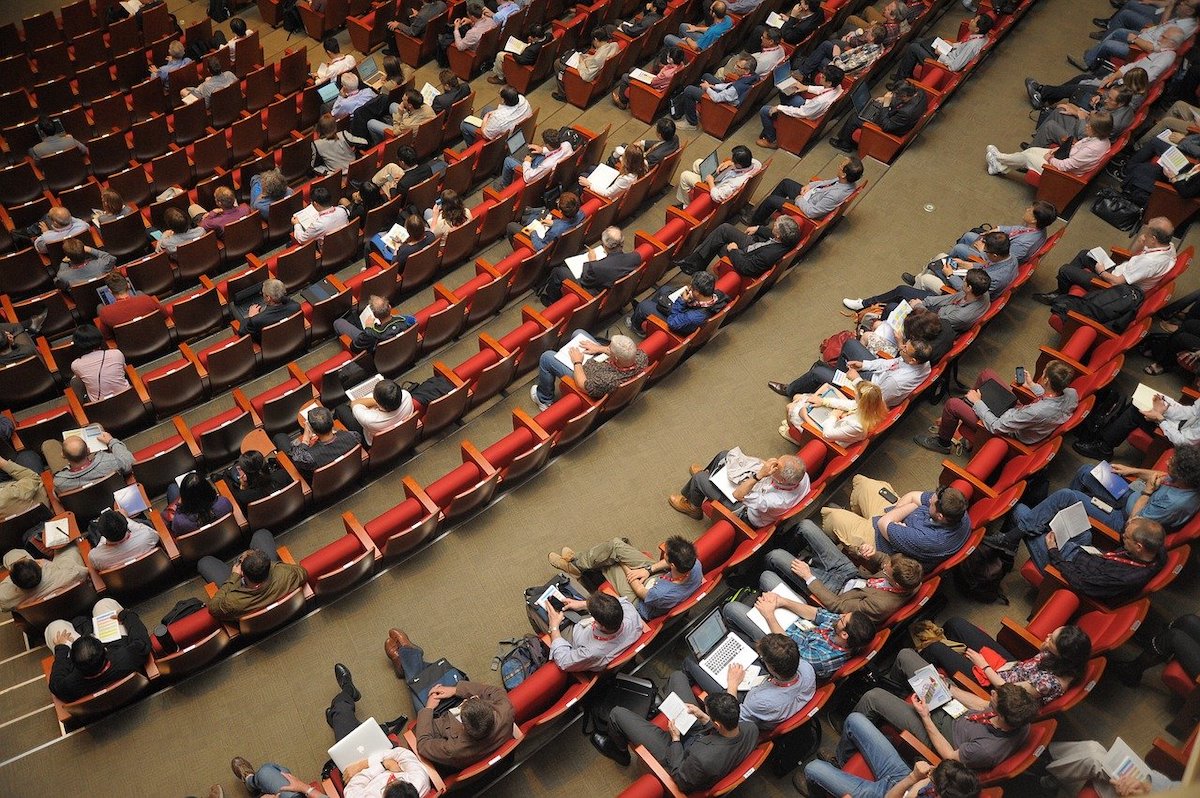On the final day of a recent conference, I had a massive meltdown in front of a room full of people.
It was painful, and while friends who were there and knew what was happening came to my aid immediately, I felt like a burden to them and everyone trying to focus on the presentation at hand. For me, having an autistic meltdown is a lot like wetting yourself in public — it’s an embarrassing experience that occurs when you’ve been trying to hold something in for too long, and once it happens, no one looks at you the same way again.
As an autistic woman, I have meltdowns (a side effect of my disability that involves a complete loss of emotional control) when I experience sensory overstimulation, particularly when I’m around crowds of people, lots of noises, and rapidly-changing variables. These are common at multi-day conferences and large-scale events, and while they’re not a big deal for the average attendee, these factors can really throw me for a loop because of who I am.
Having that meltdown at the conference was a wake-up call, both for me and the organizers, that the way events are structured needs to evolve if they are to become more inclusive of autistic people like me.
Since my diagnosis with Adult Autism Spectrum Disorder four and half years ago, I’ve developed strategies for coping with situations where crowds, noises, and last-minute changes are unavoidable. At the same time, I’ve become more open about discussing my status as an autistic person, which has led me to feel more comfortable asking for accommodations that will ease the impact of these conditions. This openness has inspired conversations with event-goers who share that they too would benefit from these accommodations, and many of them are people who are not on the Autism Spectrum or differently-abled in any way.
Based on my own experiences, plus conversations I’ve had with fellow conference attenders, here are four accessibility strategies at conferences and events that would help neurodiverse people like me, but would also be beneficial to everyone present:
Provide quiet rooms and a quiet dining space during meals.
Knowing there is a quiet room I can run to nearby when I’m feeling overwhelmed is extremely reassuring while I’m at a well-attended event. In a quiet room, there’s no conversation, phone calls, or noise from a TV or sound system. It’s just a quiet place to sit or lie down (if there’s a couch inside) where attendees can recover from sensory overload, or from a particularly draining session.
Quiet rooms should be easily accessible for everyone who needs them, which means they should be located away from conference rooms or hallways where loud conversations or activities are happening. They should also be on the first floor and accessible stairs-free. Same for quiet dining areas, where conference-goers can eat their food in a calming, noise-free setting as they re-charge.
https://twitter.com/martarusek/status/1185576699515285504
Schedule more downtime and longer meal breaks.
Having more time between conference sessions helps so many people, from those who need recovery time in a quiet room to wheelchair users who require more time to get from one space to another (especially if elevators are far away, slow, or are in limited quantity). That extra time means attendees can also catch up on changes to the schedule, such as cancellations and room changes.
Rapid changes that happen with little to no notice can bring about meltdowns for me and other folks on the Autism Spectrum. Having time and space to process these changes can help prevent meltdowns and keep us engaged.
Livestream big presentations or speaker events online.
This is especially helpful if your conference crams a lot of small presentations, workshops, and breakout groups into each day. If an attendee is overwhelmed by crowds or feels drained by having interactions with others, the last thing they want to do is go to a keynote event in a noisy auditorium at the end of the day, when their energy level is at its lowest.
Giving attendees the option to watch a speaker via livestream allows them to enjoy the experience in their hotel room or dorm at a volume level that is most comfortable for them.
Answer every question like it’s the first time someone has asked it.
It means a lot to me when a volunteer or event organizer doesn’t point out the fact that I’ve asked them the same question a few times over the course of the day. Being around large crowds and having so many choices to process doesn’t help my already quirky short-term memory, but being shamed for forgetfulness isn’t helpful, either. Knowing that every question is valued, no matter how many times it is asked, conveys to me and other attendees that we are welcome and wanted at this event.
###
These strategies are four small steps event organizers can take to create an environment that is more inclusive for individuals on the Autism Spectrum like me. But at the end of the day, we ALL deserve an event experience that makes us feel like we’re welcome and valued participants.
Join our growing Slack community
Join 5,000 tech professionals and entrepreneurs in our community Slack today!
Donate to the Journalism Fund
Your support powers our independent journalism. Unlike most business-media outlets, we don’t have a paywall. Instead, we count on your personal and organizational contributions.

A founder’s vision comes alive at a showcase for Baltimore’s student entrepreneurs

Traditional PPE isn’t made for everyone. Here’s how one startup is fixing it.

Pittsburgh has all the resources to be the next big green energy hub — except the workers to make it happen


